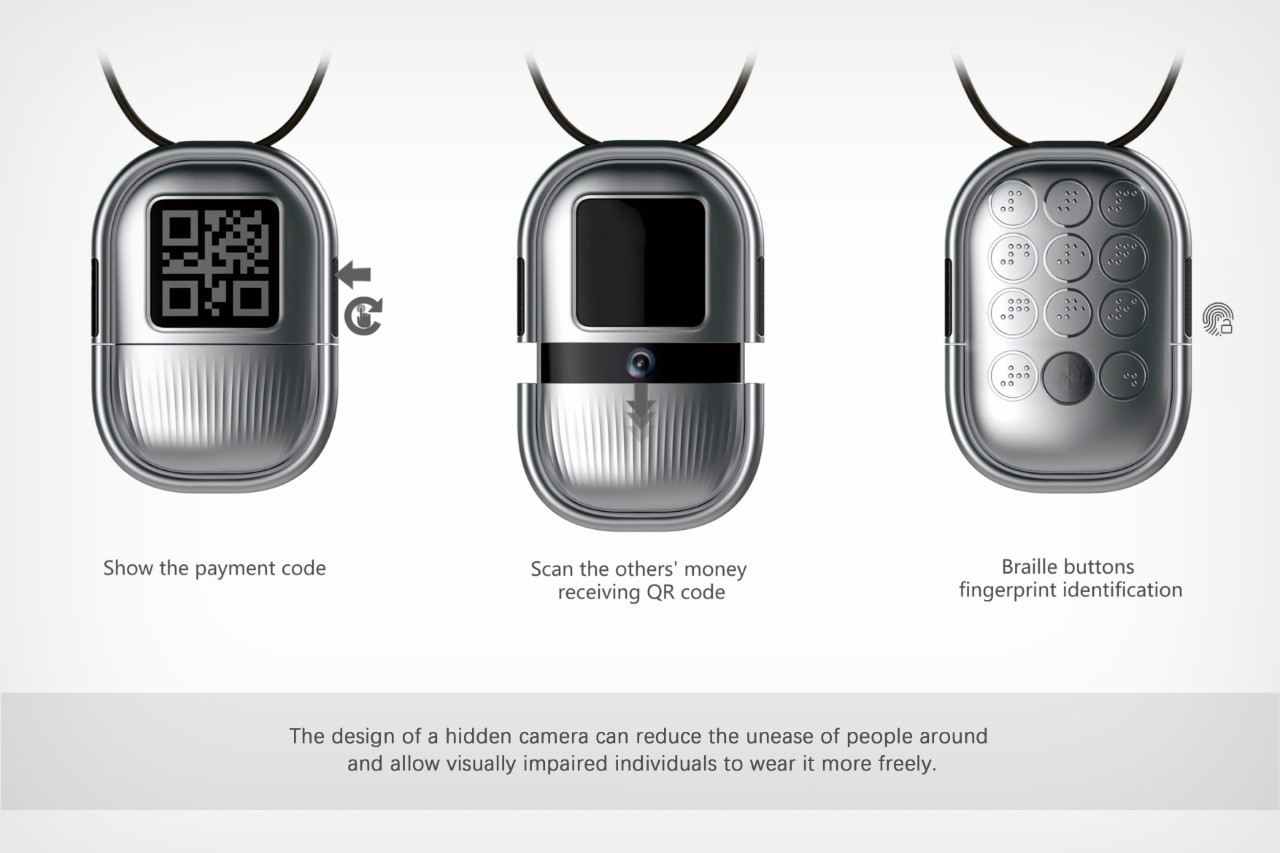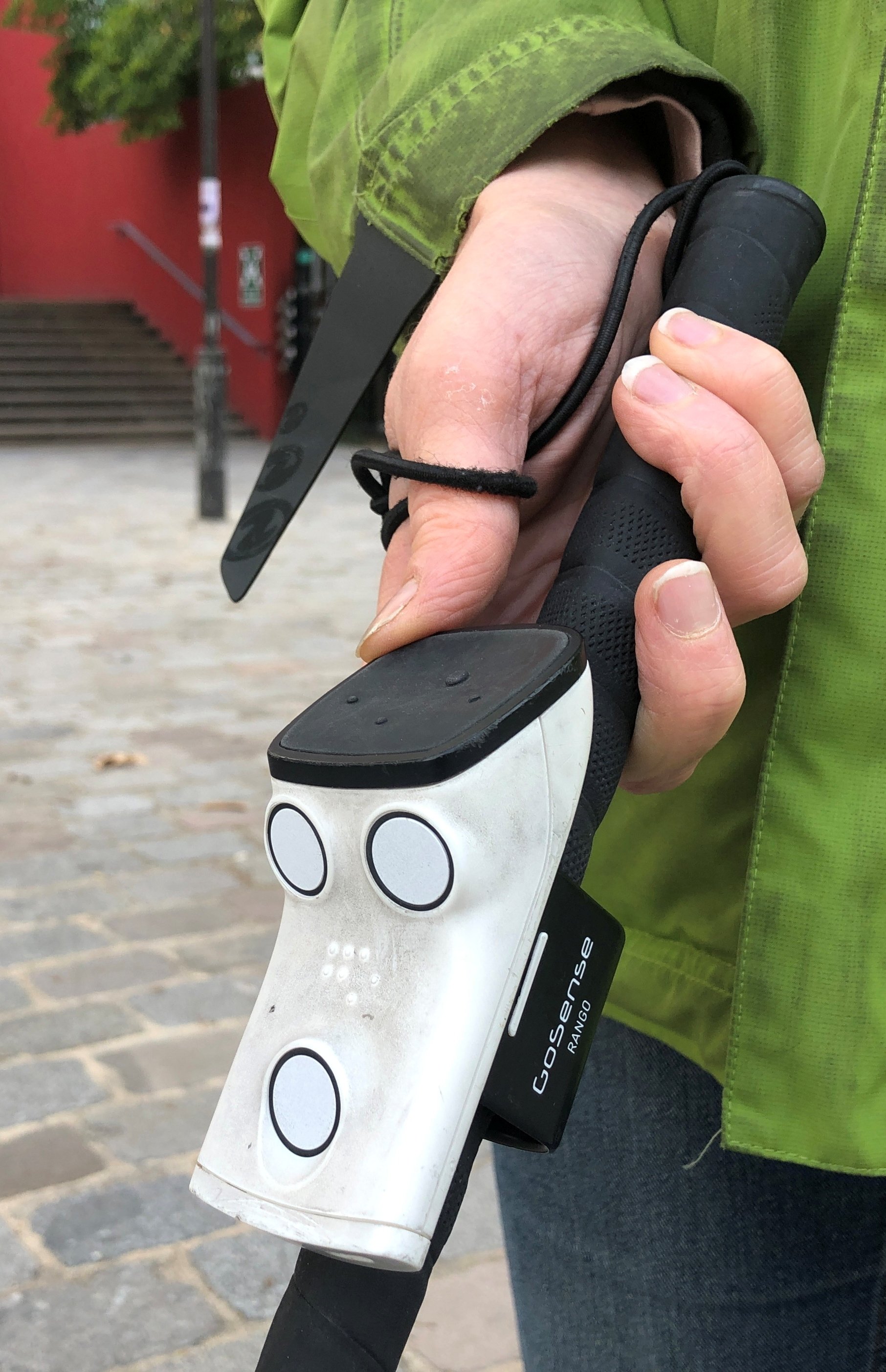Wearable Technology for Low Vision: Making Daily Life Easier
Wearable Technology for Low Vision: Making Daily Life Easier
Blog Article
Discover Innovative Tools Developed for the Aesthetically Impaired
The development of innovative devices for the aesthetically damaged represents a substantial improvement in access and self-reliance. Technologies such as smart glasses with AI capabilities and mobile applications designed to give auditory summaries are reshaping day-to-day experiences for customers. Furthermore, wearable devices that utilize haptic comments enhance environmental awareness, while modern-day Braille technologies provide new means to involve with text. As these tools continue to progress, their effect on the lives of those with aesthetic problems raises vital questions about the future of inclusivity and autonomy in different facets of life. What lies ahead in this technical landscape?
Smart Glasses for Navigating

Smart glasses created for navigation are reinventing the means aesthetically impaired people engage with their setting. These advanced tools utilize a combination of electronic camera modern technology, expert system, and auditory feedback to give real-time details regarding environments. By utilizing challenge discovery systems, clever glasses can notify individuals to potential dangers, making it possible for more secure flexibility in both unknown and acquainted setups.
The combination of GPS innovation further boosts navigating abilities, enabling users to get acoustic instructions as they relocate. This hands-free strategy not just fosters self-reliance but likewise empowers aesthetically impaired people to browse urban landscapes with raised confidence. Additionally, many clever glasses are geared up with features that identify landmarks and road indications, offering contextual information that improves the customer experience.
Moreover, the development of these devices is consistently progressing, with business functioning to enhance the precision of things acknowledgment and increase the variety of navigational attributes. As smart glasses come to be a lot more accessible and economical, they hold the potential to substantially transform day-to-day live for visually damaged users. Eventually, these cutting-edge devices stand for an important step towards inclusivity, offering enhanced mobility and a greater sense of autonomy for individuals navigating the globe around them.

Mobile Application for Daily Living
How can mobile applications boost the every day lives of aesthetically damaged individuals? Mobile apps are reinventing the method aesthetically damaged individuals browse their atmospheres, handle day-to-day tasks, and access information. These applications provide crucial assistance via various performances, fostering self-reliance and boosting quality of life.
Numerous cutting-edge mobile applications are created particularly for daily living. Apps like Be My Eyes attach visually damaged individuals with sighted volunteers via video phone calls, allowing them to receive real-time help with jobs such as checking out tags or navigating strange rooms. Similarly, Seeing AI, developed by Microsoft, uses expert system to define surroundings, reviewed message, and identify things, properly transforming a mobile phone into a powerful device for everyday help.
In addition, navigating applications tailored for the visually impaired, such as Aira and BlindSquare, use audio-based directions and ecological information, making it possible for users to traverse their surroundings safely and with confidence. Past navigation and immediate help, mobile apps additionally sustain company and task management, with attributes that help customers set suggestions, develop order of business, and track visits. In summary, mobile applications function as essential sources, empowering aesthetically impaired people to lead even more independent and satisfying lives.
Wearable Technologies for Assistance
Empowerment via technology is increasingly evident in the realm of wearable tools made to assist aesthetically impaired individuals. These ingenious tools incorporate seamlessly right into every day life, enhancing navigating and offering important feedback to individuals. For instance, smart glasses outfitted with video cameras can check out and acknowledge faces message out loud, allowing customers to connect more confidently in expert and social setups.
An additional notable development is making use of haptic responses systems in wearable gadgets. These systems use resonances or various other responsive signals to communicate information about the user's atmosphere, such as challenges or adjustments in surface, boosting mobility and safety and security. Wearable modern technologies likewise include wristbands that attach to smart devices, signaling individuals to notices through refined resonances, thus boosting connection without reliance stylish glasses on visual hints.
As these modern technologies remain to advance, they are not just improving independence for aesthetically impaired people however additionally fostering a greater feeling of incorporation in culture. By connecting the space between challenges faced in everyday living and the potential for autonomy, wearable innovations work as critical tools in the quest for equal rights and empowerment for those with visual problems.
Sound Summary Devices
Audio summary devices play an essential duty in enhancing accessibility for aesthetically impaired individuals, supplying them with the capacity to engage with visual media. Voice-activated assistive devices. These tools supply narrated descriptions of crucial visual elements in movies, television programs, and live efficiencies, making certain that customers can fully understand the context and emotions communicated with visuals
Audio description can be integrated into different platforms, including streaming solutions, movie theater screenings, and live cinema. Many preferred streaming solutions currently consist of audio description as an access function, allowing viewers to pick it quickly. In enhancement to traditional media, specialized applications likewise exist, providing audio summaries for art events, galleries, and various other cultural events.
The efficiency of audio description hinges on the ability of the storytellers, who need to communicate aesthetic information succinctly without detracting from the initial sound. Advancements in this area are additionally leading the method for even more customized experiences, where individuals can readjust the level of information and pacing according to their preferences.
Braille Innovations and Devices
Braille gadgets and developments have actually substantially transformed the means visually damaged individuals communicate with message and information. Modern innovations have led to the growth of versatile tools that enhance literacy and self-reliance among individuals. Especially, Braille display modern technologies have advanced, enabling for dynamic analysis experiences. These devices transform electronic message right into Braille, allowing individuals to access a large variety of info on mobile phones, tablets, and computer systems.
Additionally, portable Braille notetakers combine conventional Braille input with contemporary functionalities, promoting note-taking, scheduling, and paper modifying on the move. Braille displays and notetakers. These compact gadgets commonly include text-to-speech abilities, linking the space between Braille and acoustic details
In addition, cutting-edge Braille printers have emerged, enabling Clicking Here customers to produce Braille labels, records, and academic products efficiently. This availability cultivates higher participation in educational i thought about this and professional atmospheres, ultimately advertising inclusivity.
Furthermore, research study right into smart Braille modern technologies continues to increase. Gadgets that integrate expert system are being checked out to offer real-time navigation support and contextual info, enhancing the individual experience in diverse settings. Generally, these technologies show a dedication to equipping aesthetically damaged individuals via innovation, guaranteeing they can conveniently accessibility and engage with the world around them.

Verdict
The development of innovative tools for the aesthetically impaired significantly boosts independence and top quality of life. These modern technologies not only foster higher incorporation however also promote freedom in everyday activities, inevitably contributing to a much more equitable and obtainable society for aesthetically impaired people.
As wise glasses come to be a lot more budget-friendly and easily accessible, they hold the potential to significantly transform day-to-day life for visually damaged individuals. Mobile apps are transforming the way aesthetically damaged users navigate their atmospheres, manage daily jobs, and access info. Apps like Be My Eyes connect visually impaired individuals with sighted volunteers using video phone calls, permitting them to get real-time aid with tasks such as reading labels or browsing unknown rooms.In addition, navigation apps tailored for the visually damaged, such as Aira and BlindSquare, provide audio-based directions and ecological info, making it possible for customers to traverse their environments securely and confidently.The advancement of innovative tools for the aesthetically impaired significantly improves independence and high quality of life.
Report this page